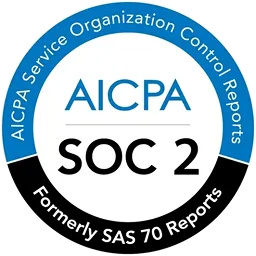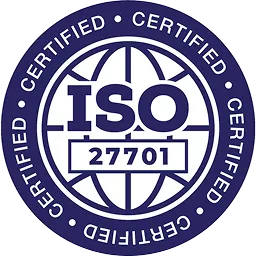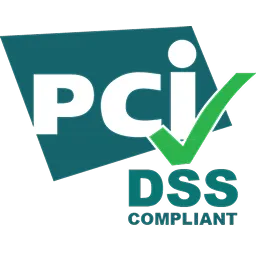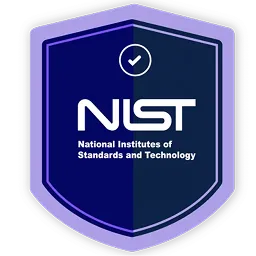The HIPAA Omnibus Rule, officially known as the "Omnibus Final Rule," is an amendment to the HIPAA Act 1996. It was enacted by the U.S. Department of Health & Human Services (HHS) and became effective on September 23, 2013.
The rule enhances the privacy and security protections for individuals' health information and expands the scope of HIPAA compliance requirements.
The HIPAA Omnibus Final Rule is an extensive collection of regulations implemented on March 26, 2013. This rule integrates several critical provisions to enhance the privacy and security of protected health information (PHI). It incorporates elements from the Health Information Technology for Economic and Clinical Health Act (HITECH) and Section 105 Title I of the Genetic Information Nondiscrimination Act of 2008 (GINA). By doing so, it establishes a comprehensive set of regulations that address modern healthcare data challenges.
A key aspect of the Omnibus Final Rule is its expansion of individuals' rights to access and control their health information. Patients are now entitled to receive an electronic copy of their PHI, promoting greater engagement in their healthcare. Additionally, the rule allows individuals to restrict the disclosure of their PHI to health plans for certain purposes, especially if they have paid out-of-pocket for specific services.
In this blog, we will explore the details of the HIPAA Omnibus Final Rule.
What’s The Purpose & Scope Of The HIPAA Omnibus Rule?
The HIPAA Omnibus Final Rule was introduced to protect confidential patient information held by healthcare providers and their business associates. This means these entities are now directly responsible for meeting HIPAA privacy and security requirements, ensuring that the entire chain of data handling maintains the highest standards of security and confidentiality. This expansion of HIPAA's guidelines ensures that PHI is protected more thoroughly across the healthcare industry.
It aims to build on the existing framework established by the HIPAA Privacy, Security, Enforcement, and Breach Notification Rules, ensuring more comprehensive and robust safeguards for protected health information (PHI).
Key Enhancements and Expansions
- Privacy Protections
- Extended Coverage: The rule extends HIPAA’s privacy requirements to business associates of covered entities, including contractors and subcontractors, ensuring that PHI is protected throughout the data handling process.
- Marketing and Fundraising Restrictions: It imposes stricter limitations on using PHI for marketing and fundraising purposes without patient authorization, protecting patients from unwanted solicitations.
- Prohibition on Sale of PHI: The sale of PHI without individual authorization is prohibited, barring a few exceptions. This ensures that patients’ information is not commercially exploited.
- Security Enhancements
- Stricter Security Measures: The rule requires covered entities and business associates to implement more stringent security measures to protect electronic PHI. This includes conducting regular risk assessments and adopting safeguards such as encryption and secure access controls.
- Comprehensive Security Programs: Organizations must develop and maintain comprehensive security programs that address potential threats and vulnerabilities, ensuring ongoing protection of PHI.
- Enforcement and Penalties
- Tiered Penalty Structure: The rule introduces a tiered penalty structure for HIPAA violations, with penalties scaled according to the level of negligence and the nature of the violation. This provides a clear incentive for organizations to comply with HIPAA requirements.
- Mandatory Audits: The Omnibus Rule supports the Office for Civil Rights (OCR) in conducting regular audits of covered entities and business associates, ensuring compliance, and addressing issues proactively.
- Breach Notification Requirements
- Expanded Definition of Breach: The definition of what constitutes a breach has been broadened. Any acquisition, access, use, or disclosure of PHI that compromises its security or privacy is considered a breach unless the covered entity can demonstrate a low probability that the information has been compromised.
- Timely Notifications: Organizations must notify affected individuals, the OCR, and, in certain cases, the media of breaches involving unsecured PHI within specific timeframes. This ensures transparency and allows individuals to take steps to protect themselves.
Additional Rights For Individuals
- Access to Information
- Right to Request Copies: Patients can promptly request and receive electronic or paper copies of their PHI, including medical records. This promotes patient engagement and facilitates continuity of care.
- Access to Electronic Health Records (EHRs): The rule supports the growing use of EHRs by ensuring that individuals can easily obtain electronic copies of their health information.
- Transparency in Data Usage
- Accounting of Disclosures: Individuals can request an accounting of disclosures, providing a clear overview of how their PHI has been used or shared over a specified period. This promotes transparency and accountability.
- Informed Decisions: By understanding how their information is being used, individuals can make more informed decisions about their healthcare and privacy preferences.
The HIPAA Omnibus Final Rule represents a significant step forward in protecting and managing patient information. It enhances the security and privacy of PHI and empowers individuals with greater control over their health data. By addressing contemporary challenges and technological advancements, the rule ensures that the healthcare industry remains committed to safeguarding patient information in an increasingly digital world.
Key Components Of HIPAA Omnibus Rule
The HIPAA Omnibus Rule introduced crucial components that redefine and clarify the roles of covered entities and business associates within the healthcare landscape. These key components aimed to bolster privacy protections, enhance security measures, and reinforce compliance standards. Let's delve into the detailed definitions of covered entities and business associates as outlined in the rule:
1: Covered Entities
Covered entities under HIPAA encompass various entities involved in healthcare operations and transactions. These include:
- Healthcare Providers: Any individual or organization that furnishes healthcare services, such as hospitals, clinics, physicians, psychologists, and chiropractors.
- Health Plans: Entities that provide or pay for medical care, such as health insurance companies, HMOs, Medicare, Medicaid, and group health plans.
- Healthcare Clearinghouses: Entities that process nonstandard health information into standard formats, such as billing services, repricing companies, and community health management information systems.
The HIPAA Omnibus Rule reiterated the responsibilities of covered entities in safeguarding Protected Health Information (PHI) and complying with HIPAA regulations. Covered entities must implement appropriate administrative, physical, and technical safeguards to protect PHI's confidentiality, integrity, and availability.
2: Business Associates
Business associates are individuals or entities that perform functions or activities on behalf of or provide services to covered entities that involve the use or disclosure of PHI. Examples of business associates include:
- Third-party administrators: Entities that assist health plans with claims processing or administration.
- Billing Companies: Organizations that handle billing services for healthcare providers.
- Legal Counsel: Lawyers or firms providing legal services to covered entities involving PHI access.
- IT Service Providers: Companies that manage electronic health records (EHRs), provide cloud storage services, or offer IT support to covered entities.
The HIPAA Omnibus Rule expanded the scope of business associates' responsibilities and liabilities. It made business associates liable for HIPAA compliance and imposed stringent requirements for safeguarding PHI. Business associates must now enter into Business Associate Agreements (BAAs) with covered entities, outlining the terms of PHI use and compliance responsibilities.
In short, the HIPAA Omnibus Rule clarified and strengthened the definitions of covered entities and business associates, emphasizing their roles in protecting individuals' health information and ensuring compliance with HIPAA regulations. These definitions serve as foundational pillars for safeguarding privacy and security in the healthcare industry, promoting trust and confidentiality in patient-provider relationships, and fostering a culture of compliance across the healthcare ecosystem.
What Does The HIPAA Omnibus Rule Mandate?
The HIPAA Omnibus Rule, enacted in 2013, significantly changed the healthcare landscape by mandating modifications to the Privacy, Security, and Enforcement Rules. It aimed to align with provisions outlined in the HITECH Act, finalize the Breach Notification Rule, and incorporate standards necessitated by the passage of the GINA Act. Here’s a detailed breakdown of the key provisions mandated by the HIPAA Omnibus Rule:
1: Direct Liability For Business Associates
Previously, if a business associate violated HIPAA, the covered entity they served would bear the liability. However, the Omnibus Rule amended this by making business associates and their subcontractors directly liable for HIPAA compliance. This was achieved through amendments to Subpart D of the General Rules and §164.500 of the Privacy Rule.
2: Strengthening Limits On Uses & Disclosures
While the modifications in this aspect were relatively restrained, the rule enhanced limitations on the uses and disclosures of Protected Health Information. Notable changes included granting patients the right to opt out of fundraising communications and requiring authorization to sell Protected Health Information.
3: Expansion Of Individuals' Rights
The rule expanded individuals' rights regarding the restriction of disclosures and the request for copies of their Protected Health Information. Covered entities were now obligated to agree to requests for withholding payment information from a health plan under certain circumstances and to provide electronic copies of Protected Health Information in the requested format where readily available.
4: Modifications To Notices Of Privacy Practices
Covered entities must modify and redistribute Notices of Privacy Practices to reflect the strengthened limitations and expanded rights. This ensures that individuals are informed about their rights and any changes in privacy practices. Compliance with the redistribution requirement is guided by minimizing unnecessary costs and administrative burdens.
5: Changes In Authorization Requirements
The Omnibus Rule introduced new requirements for obtaining authorization before the sale of Protected Health Information. Simultaneously, certain events were removed from the list of disclosures necessitating prior authorization, such as disclosing a child's immunization status to a school or disclosing Protected Health Information of deceased individuals after fifty years.
6: Adoption Of A Four-Tiered Civil Monetary Penalty Structure
Prior to the HITECH Act, penalties for HIPAA violations were limited to $100 per violation, with an annual maximum of $25,000. Moreover, penalties could only be imposed in cases of willful neglect. The HITECH Act introduced a more stringent penalty structure featuring four tiers with increased fines. Violations could now incur penalties of up to $50,000 per violation, with a maximum annual penalty of $1,500,000. These penalties have since seen further adjustments to keep pace with evolving compliance standards.
7: Finalization Of The Breach Notification Rule & Revised "Harm" Threshold
While the Breach Notification Rule had been in effect since 2009, the HIPAA Omnibus Rule of January 2013 brought about additional standards and amendments to clarify breach definitions and notification responsibilities. Notably, it revised the "harm" threshold, requiring entities to assess whether harm was likely following a breach before deciding whether to notify affected individuals and the HHS Office for Civil Rights. This revision ensured a more consistent and comprehensive breach management and notification approach.
8: Addition Of Standards To Incorporate The GINA Act of 2008
The Genetic Information Nondiscrimination Act (GINA) of 2008 prohibited health insurance companies and employers from discriminating against individuals based on genetic information. The HIPAA Omnibus Rule responded to this by expanding the definition of Protected Health Information to include genetic health information. Furthermore, it forbade health plans from using or disclosing genetic information for underwriting purposes. This addition aimed to safeguard individuals against genetic discrimination and reinforce privacy protections for sensitive health data.
Overall, the HIPAA Omnibus Rule aimed to enhance privacy protections, strengthen compliance requirements, and empower individuals with greater control over their health information. It marked a significant milestone in safeguarding the confidentiality and security of health data in the evolving healthcare landscape.
Latest Changes To The HIPAA Omnibus Rule
The HIPAA Omnibus Rule heralds significant changes in the healthcare landscape, compelling healthcare professionals to adapt their practices to meet updated regulatory standards. Here's an in-depth look at the key modifications brought about by the Omnibus Rule:
- Breach Notification
Before the Omnibus Rule, only breaches affecting 500 or more individuals necessitated official notification. However, the new mandate requires reporting of any impermissible use or disclosure of Protected Health Information (PHI), irrespective of the number affected. This heightened requirement is poised to increase the number of security breaches reported. Covered entities and business associates are urged to conduct thorough risk analyses to accurately assess potential breaches and mitigate risks.
- Direct Enforcement On Business Associates
The Omnibus Rule extends Privacy and Security Rule enforcement directly to business associates and their subcontractors. This necessitates updating existing business associate agreements to align with the new requirements. Covered entities are advised to enhance their review processes to ensure business associates' compliance and incorporate liability protections into contracts.
- Marketing Restrictions
The rule imposes tighter restrictions on using PHI for marketing purposes, requiring patient authorization if a third party compensates a covered entity for promoting its products. This empowers individuals to control the use of their PHI.
- Reasonable Disclosures
Streamlining the process of sharing student immunization records with schools, covered entities can now release such records with documented parental or guardian agreements, facilitating compliance with state laws and ensuring students' health and safety.
- Protection Of Genetic Information
Incorporating provisions of the Genetic Information Nondiscrimination Act of 2008, the Omnibus Rule enhances protections for genetic information within HIPAA's privacy regulations, shielding individuals from discrimination based on genetic makeup.
- Research Involving PHI
The rule simplifies consent requirements for research participation. It allows single forms to cover multiple studies and enables researchers to obtain prospective consent for future studies. These updates aim to facilitate the safe collection of PHI for research purposes.
- Penalties
The Omnibus Rule establishes strict penalties to deter violations, with fines of up to $1.5 million per identical violation type per year. These penalties underscore the importance of maintaining consumer trust and data security while deterring reckless behavior.
- Privacy Changes
The Omnibus Rule addresses various aspects of PHI use, including marketing and fundraising, selling PHI without patient consent, student immunization record disclosures, patient rights regarding PHI disclosure to health plans, and individual access to electronic PHI.
In summary, the HIPAA Omnibus Rule represents a significant step towards enhancing the security and privacy of PHI, emphasizing compliance, consumer protection, and trust in the healthcare system.
Positive Impact Of The HIPAA Omnibus Final Rule
The HIPAA Omnibus Final Rule has significantly transformed healthcare by enhancing awareness, accountability, and security. Individuals have become more knowledgeable about their HIPAA rights, leading to a more informed patient population. The rule has also shed light on the frequency and scale of data breaches, prompting organizations to prioritize HIPAA compliance more than ever.
Over a decade since its implementation in 2013, the rule has set a higher standard for data privacy and security in healthcare. This heightened awareness has driven organizations to take proactive measures to safeguard patient information, improving overall compliance and reducing the risk of breaches.
Looking ahead, organizations must continue to adapt to evolving regulations. Non-compliance could lead to severe consequences. Organizations can adopt access review tools like Zluri to enhance their HIPAA compliance efforts. Zluri offers comprehensive visibility into app access and entitlements, allowing for thorough access assessments. It also provides robust revocation workflows for auto-remediation, swiftly eliminating high-risk accounts. This proactive approach ensures continuous monitoring and rapid incident response, aligning seamlessly with HIPAA requirements.
By embracing these measures, organizations can ensure they meet current standards and are prepared for future regulatory developments.
Frequently Asked Questions (FAQs)
1: Who enforces the HIPAA Omnibus Final Rule?
The HIPAA Omnibus Final Rule is enforced by the Office for Civil Rights (OCR) within the U.S. Department of Health and Human Services (HHS). The OCR is responsible for investigating complaints, conducting audits, and ensuring compliance with HIPAA regulations.
2: What does omnibus mean in medical terms?
In medical terms, "omnibus" is a comprehensive or all-encompassing approach. When applied to healthcare, an "omnibus" approach typically indicates a set of regulations, rules, or provisions that comprehensively address various aspects of healthcare practices, policies, or procedures.
3: What is the Omnibus Act in healthcare?
The "omnibus Act" in healthcare usually refers to a legislative package or law encompassing multiple healthcare provisions or reforms. Such an act may include various measures aimed at improving healthcare delivery, access, affordability, or quality, often covering a wide range of topics such as insurance regulations, patient rights, provider reimbursements, and public health initiatives.






.png)
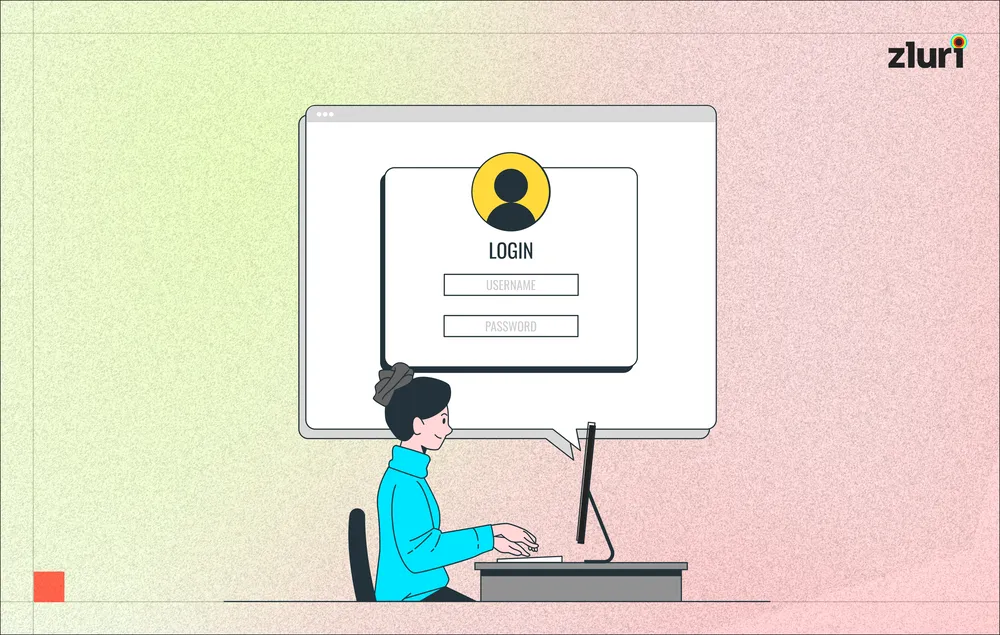

.svg)



